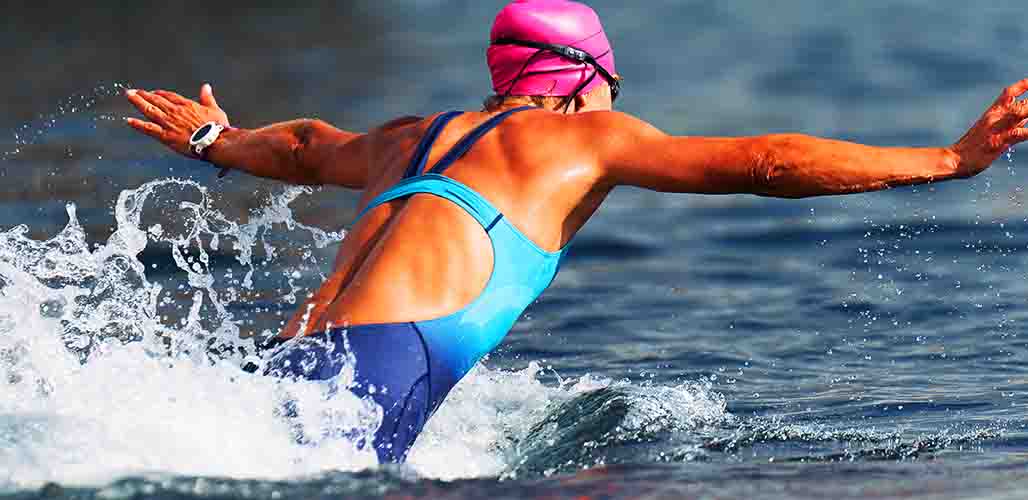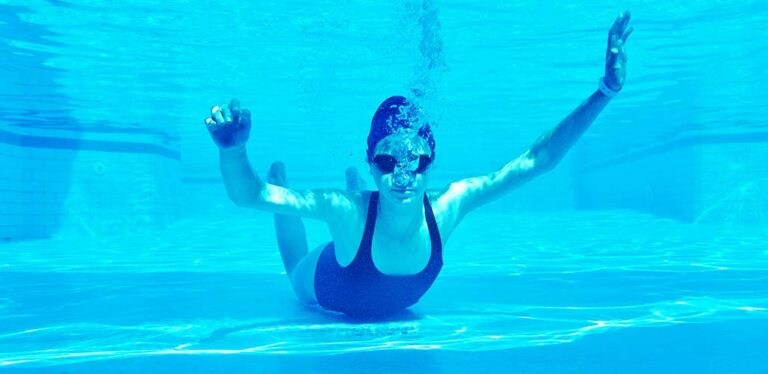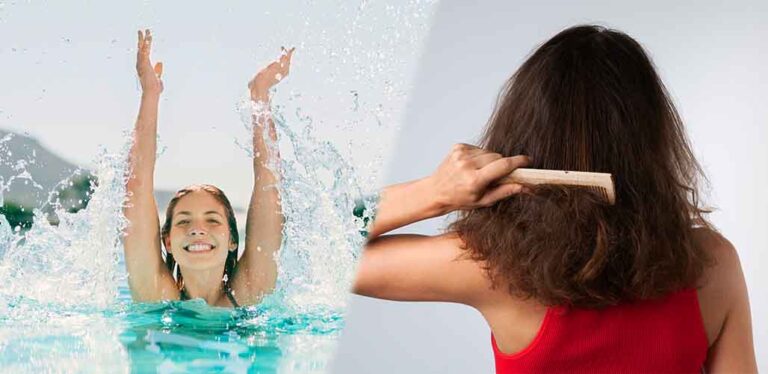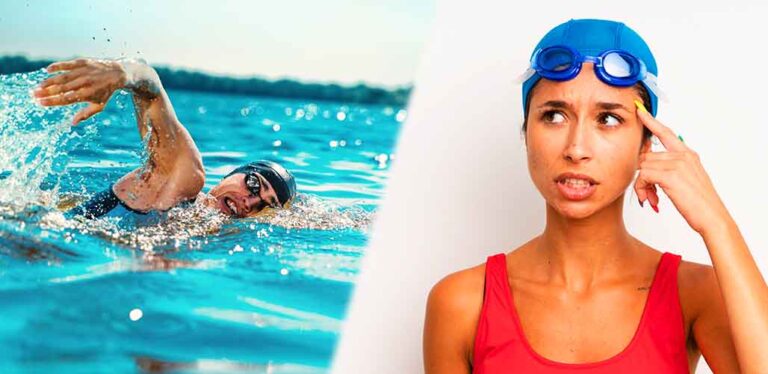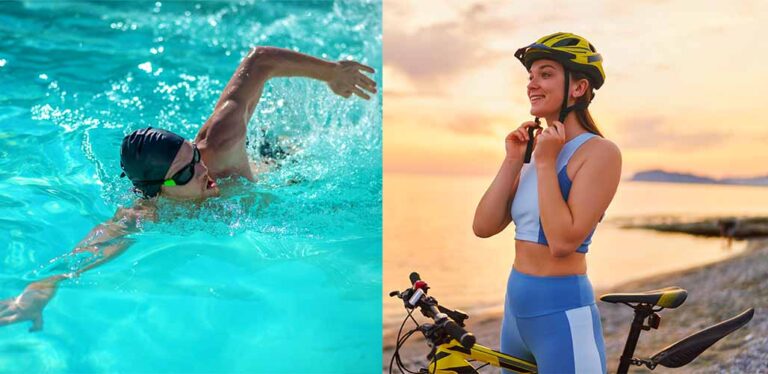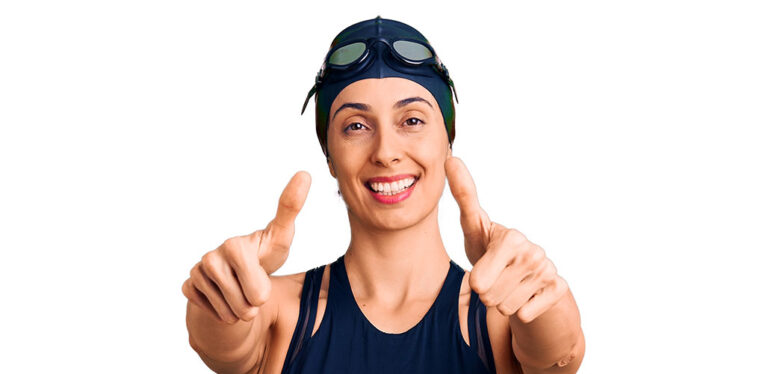Why Do Swimmers Have Long Torsos?
Why do swimmers have long torsos, and will I ever be able to compete in terms of speed and technique without one? We’re all gloriously unique in our own body shapes, but a long torso is something lots of elite swimmers have in common. That’s because it usually means a bigger lung capacity, and better hydrodynamics. But a long torso isn’t a prerequisite for being talented at swimming, or even enjoying it.
Contents
Why Do Swimmers Have Long Torsos?
If you dream of becoming a competitive swimmer, or you’re simply an active observer of the sport, you’ve likely noticed that those who perform exceptionally well have longer than average torsos. It isn’t a coincidence, and this physical trait has certain advantages in the water.
Considering that most elite swimmers have several physical traits in common, there must be a fairly logical reason as to why there is an ideal “swimmer’s body.” And it’s this – longer torsos equate to higher lung capacity, increased wingspan, and even hyperextended chests. Longer torsos have an additional specific benefit for backstroke swimmers, but we’ll get back to that in a minute.
If you’re not built like Michael Phelps, don’t worry though. Swimmers of all shapes and sizes can enjoy the benefits of being in the water, and even compete successfully. After all, nothing takes the place of mental focus, consistency, and a drive to succeed.
What Body Type is Best for Swimming?
When you examine the swimmers who compete at an international level, you’ll find that many are tall, lean, muscular, and have longer-than-average torsos combined with shorter-than-average legs.
Tall swimmers have a visible advantage over their shorter counterparts, as they can swim further with less effort. This is why many elite male swimmers are well over 6 feet tall. Olympians Nathan Adrian and Michael Phelps are 6’6 and 6’4, respectively. That’s 6+ inches of body length over the average American male, who stands at 5’9. Female swimmers tend to be on the taller side as well, with many Olympians hitting 6′ or an inch or two shy of it. With a taller height, swimmers often possess longer arms. This allows them to grasp a farther reach of the water as they’re going through their strokes.
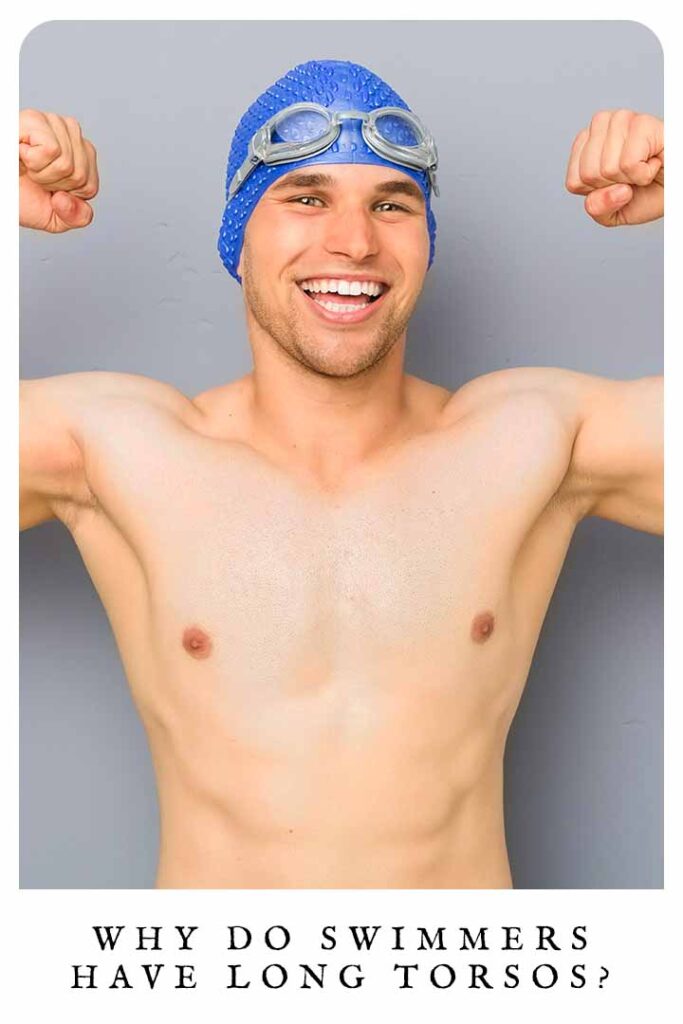
An interesting quality about the swimmer’s body is the shorter-than-average legs. While they’re often very tall, their torso, arms, and legs aren’t quite proportional to each other. Obviously, this isn’t something they achieve through training though! Rather, swimmers born with these proportions are more likely to reach the highest levels of competition. Shorter legs combined with a longer torso decrease drag in the water, enabling the swimmer to move quickly and efficiently.
Other ways to reduce drag in the pool, even for those with average-shaped bodies, are to shave any excess body hair, wear a form-fitting suit, and secure a latex swim cap to reduce the resistance from hair.
The Benefit of a Longer Torso
Generally speaking, a longer torso means that a swimmer’s center of mass is closer to the lungs. This has the benefit of allowing the swimmer to float more effortlessly in the water. A long torso also means potential for a greater lung capacity. A high lung capacity in a broad chest sends a greater amount of oxygen to the muscles, which in turn helps to improve performance in the pool. This isn’t only advantageous in the water, but in any sport. Elite athletes with a lung capacity greater than six liters (the average) can push themselves harder and for a longer period with less exertion.
Swimmer’s bodies can also be compared to the shape of a boat, in that a long and lean physique is comparable to a hull. It allows the swimmer to cut through the water, seemingly effortlessly. A larger torso also creates a larger surface area that enables swimmers to glide at high speeds and stay streamlined while in the water. In fact the hydrodynamic benefit of a longer torso coupled with short legs is even greater than power gains of having relatively long legs. Which brings us back to those lucky body proportions of the most accomplished swimmers.
Case Study: Michael Phelps
When considering an impressively decorated Olympic athlete such as Michael Phelps, it’s not difficult to see why he’s found so much success in the pool. Not only does he have a natural talent for swimming; but he also has physical attributes that are inherently inclined toward the aquatic sport.
With his tall stature, long torso, and massive wingspan, Phelps cuts through the water with an impressive combination of speed and power. From fingertip to fingertip, Michael’s wingspan is over 6 feet in length! This provides him with the ability to power himself through the water at breakneck speeds.
Different Strokes for Different Folks
Some body proportions give an advantage to all swimmers. Namely:
- Low body fat
- Broad shoulders
- Wide hips
- Long arm span (but short forearms)
- Greater forearm girth
But among the most successful competitive swimmers, even more subtle patterns are observable. Specifically, butterfly swimmers typically have more muscular calves, and backstroke swimmers benefit from having longer backs. Longer backs, which by necessity mean a longer torso too, help backstroke swimmers travel more quickly through the water – like boats with longer hulls.
Of course, no one swimming for pleasure, leisure or fitness should be put off swimming any stroke they like, just because of their body shape. But, knowing these things might help you find a stroke you particularly enjoy. And it’s a fascinating insight into the depth of consideration given when swim coaches try to identify and foster talent in young swimmers!!
The Disadvantages of a Swimmer’s Body
Swimmers are notable for having broad shoulders and long torsos, even female athletes. But there are some disadvantages to the ideal “swimmer’s body,” and these physical traits can alter how they move on land and how prone they may be to certain injuries.
Competitive swimmers commonly possess hyperextended joints. Being double-jointed is an advantage in the water as it helps swimmers to rotate their shoulders, wrists, and ankles with greater ease which results in powerful kicks and strokes in the pool. These areas of hyperextension can negatively impact how swimmers exercise on land. The water is often more forgiving of this quality but swimmers must practice extra caution when moving their bodies on land to avoid injury. The joints are put at increased risk, such as when lifting heavy, running fast, and forgetting to properly warm up and cool down after a workout.
Even in the pool, swimmers are put at risk of a wide range of shoulder, neck, and lower back injuries. Rotator cuffs can tear and cartilage around the shoulder socket can be damaged. In fact, “swimmer’s shoulder” is a term used to coin this specific injury, as it happens so commonly to those who strain these tendons.
Summary
Success in competitive swimming is a combination of factors outside our control, like body proportions, and hard work, dedication, and hours upon hours of practice. Many successful swimmers have long torsos, which help them float, meet the oxygen demands of their muscles, and move faster through the water. But, people of any shape and size can enjoy swimming – after all, the vast majority of us are not elite athletes! The technique behind a swim stroke can be perfected, even when body proportions aren’t the “ideal” match for the sport. Most of all, swimming should be about achieving fitness, having fun, and enjoying the mental benefits of being in the water.
Don’t Miss
- Is swimming bad for your posture?
- How broad shoulders help you swim
- Top tips for a faster freestyle
- Could I swim the English Channel?
References
- Delgado & Bajaj. Physiology, Lung Capacity. National Library of Medicine. 2022.
- Junge et al. The association between generalized joint hypermobility and active horizontal shoulder abduction in 10–15 year old competitive swimmers. BMC Sports Science, Medicine and Rehabilitation. 2016.
- Kjendlie et al. Factors affecting swimming economy in children and adults. European Journal of Applied Physiology. 2004.
- Nevill et al. Key somatic variables associated with, and differences between the 4 swimming strokes. Journal of Sports Sciences. 2020.

